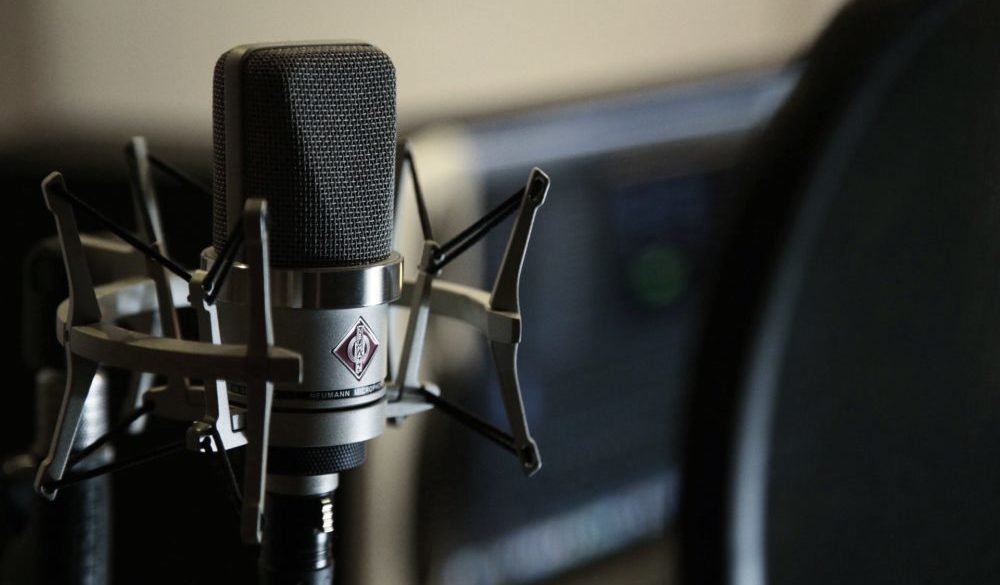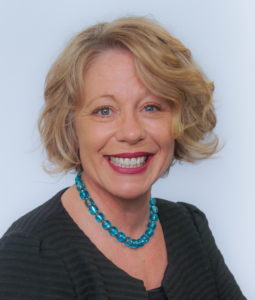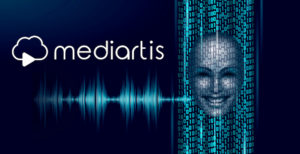M+E Daily

Mediartis: Tackling Voice-Data Compliance in M&E Localization
Story Highlights
On the forefront of voice privacy and casting technology, Paris-based Mediartis provides an innovative and efficient solution to a far-reaching compliance liability risk in the media and entertainment (M&E) sector where high volumes of voice personal data is shared on an ongoing basis.
Mediartis CEO Cécile Limal, and COO Nicole Quilfen, spoke with MESA about the company’s expertise in voice-data privacy, the challenges GDPR brings to the localization industry, how Mediartis can protect the localization ecosystem from non-compliance risks, and how the M&E sector has adopted their technology.
MESA: How did Mediartis first come on the scene?
 Limal: Mediartis was developed as an organic response to the EU GDPR impact on the dubbing and voice-over industry. Our company provides voice casting solutions to more than 700 studios, agents, and voice directors worldwide.
Limal: Mediartis was developed as an organic response to the EU GDPR impact on the dubbing and voice-over industry. Our company provides voice casting solutions to more than 700 studios, agents, and voice directors worldwide.
With the looming arrival of GDPR, many of our partners began raising concerns about the logistics of managing the compliance of their own voice casting assets, and monitoring partner compliance.
The particularity of casting assets is that they are collected over long periods of time and include biometric voice-data and traditional personal data.
No matter the source of the samples – collected before the GDPR came into effect, sent in by actors or agents, saved from past projects, downloaded from casting platforms, or shared by studios and creative directors – the data is covered by GDPR, and the legislation is applicable.
Since the issue wasn’t being addressed by M&E industry Best Practices or standardized partner assessments, we decided to tackle the issue head on. In close collaboration with two leading Parisian legal firms specialized in privacy, we designed Mediartis’ architecture around the GDPR.
Our technology offers an automated compliance processing solution, asset optimization tools, project management workflows with compliance safeguards, and interactive client delivery on streaming.
MESA: For business leaders, what are the biggest voice-data privacy challenges Mediartis is seeing today and what do they need to be on top of?
Quilfen: Achieving and maintaining compliance of voice assets, re-defining and implementing compliant internal and external audio workflows, and monitoring partner compliance are critical for the localization sector.
Generally speaking, the M&E industry hasn’t entirely understood the implications of the GDPR on their voice assets and workflows. Many companies are unaware that voice is protected, and that voice samples and projects fall in the scope of the GDPR. Companies sharing and processing samples have a myriad of ongoing legal obligations to respect.
Casting databases are dynamic, talents and new media are added regularly. Every modification and/or media added requires specific processing in order to be compliant.
Most traditional voice casting workflows are non-compliant and need restructuring. The casting phase is the one moment when everyone in the industry is working together and sharing incredibly high volumes of personal data in a very short period. Partners share loads of assets that “might” work, looking for the best pieces, and these data are shared by mail, ftp, corporate drives, etc., putting the entire work chain in danger.
There is also a widespread misconception that the GDPR is only an EU issue, when in fact the legislation is extraterritorial and applies to:
● Companies established in the EU
● Companies located outside of the EU who process the personal data of individuals within the EU
● Personal data of individuals outside of the EU but sent to the EU/processed in the EU/transiting in the EU
MESA: How does Mediartis simplify asset and workflow compliance?
 Quilfen: Mediartis automates voice-data GDPR obligations and provides real-time compliance reporting. Our solution makes compliance ‘painless’ for organisations, letting them focus on the more artistic aspects of projects, such as choosing the perfect voice or candidate.
Quilfen: Mediartis automates voice-data GDPR obligations and provides real-time compliance reporting. Our solution makes compliance ‘painless’ for organisations, letting them focus on the more artistic aspects of projects, such as choosing the perfect voice or candidate.
The software solicits talents for explicit opt-in consent of use — which cannot legally be included in any work contract or NDA. It also records and renews consent regularly and also for all modifications and new voice media that are added to databases, it also routes and processes updates and deletion requests made by talents.
Talents have permanent access to a secure interface where they can read their media (watermarked for added security), visualize traditional personal data, and validate, refuse or request modifications.
User attribute-based access permissions secure data and project creation, meaning the system limits what users can do with data (i.e. visualize, update, delete). Safeguards ensure only compliant assets are used in projects, and interactive client delivery on streaming protects data. Client attribute-based validation and re-sharing permissions help organizations maintain control.
MESA: How does Mediartis mitigate non-compliance risk for the dubbing ecosystem?
Quilfen: GDPR introduces the notion of co-responsibility, meaning any breach at any step of the process puts the entire work chain at risk. Every organizations workflows are different and it is impossible to know how the data you physically share with another organisation will be processed. Will the receiver understand and respect the data’s compliance obligations?
Mediartis’ compliance-centric solutions protect the entire dubbing ecosystem, from agents, studios, producers, and content creators to distributors, from non-compliance risks by providing controlled casting environments and processes.
Attribute-based access permissions to interactive castings on streaming and real-time GDPR status visibility of every asset used in projects helps organisations securely collaborate with partners, maintain control of their data and verify partner compliance.
MESA: How has Mediartis been adopted by the M&E industry?
Limal: Our technology is scalable, and our clients range from independent studios to global localization service providers located all over the world. Some of our clients have deployed Mediartis in their audio studios worldwide and complement the compliance workflows in response to territorial-specific legislation.
Until now, industry technologies have not offered tools for casting assets and workflows and audio teams are thrilled to have elaborate tools created especially for their processes.
Feedback from leading M&E security and compliance service providers has been incredibly positive. With partner compliance assessments not yet standardized and implemented into industry Best Practices, organizations don’t have a roadmap to guide their own compliance strategies or for verifying partner compliance. Mediartis provides a solution for this dangerous industry oversight.
 Service providers, content creators, distributors and publishers strongly endorse Mediartis as it simplifies verification of supplier compliance. In fact, several leading publishers actually refuse castings if they aren’t delivered via the platform.
Service providers, content creators, distributors and publishers strongly endorse Mediartis as it simplifies verification of supplier compliance. In fact, several leading publishers actually refuse castings if they aren’t delivered via the platform.
Voice actors are delighted to have a say in how their voice and image are promoted and their feedback enriches the quality of casting databases.
MESA: What’s next for Mediartis, what can we expect from the company on the horizon?
Limal: We have some exciting developments in the works, and will continue to develop innovative product and technology solutions aligned with evolving client and M&E industry needs.
Mediartis’ Multi Partner Project (MPP) tool will be launching at NAB in Las Vegas. MPP is a management tool for projects involving multiple partners (vendors, agents, etc.). Asset compliance is tracked and allows Mediartis users to demonstrate project compliance, even when media assets from multiple sources are integrated into interactive projects delivered via the platform.
Our API, available this summer, will make our solutions accessible to organizations wanting to integrate our technology into internal tools.
In Q3, Mediartis will scale to support additional freelancer work case scenarios such as translators, adaptations, sound engineers, etc.









